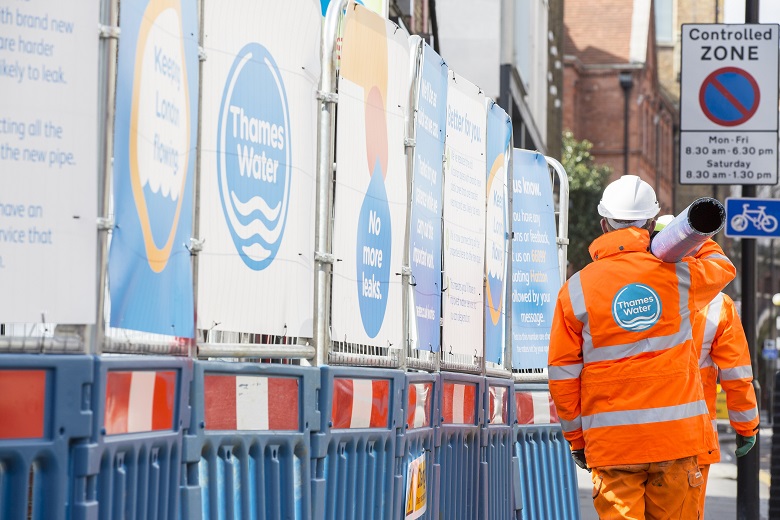Thames Water’s £55m network upgrade for growing Guildford
Friday 17th July 2020 13:30

Thames Water will invest more than £55 million over the next five years to upgrade Guildford’s water supply and ensure it can meet increased demand from thousands of new homes.
The announcement comes during the ongoing £1.8m upgrade of Netley Mill water treatment works which supplies 8,500 properties in Cranleigh and the surrounding villages via Hurtwood, Alderbrook and Lambswood reservoirs. The work will increase the resilience of the site and reduced the risk of supply interruptions.
Looking ahead, more than 8,000 new homes are planned for the Guildford area in the next five years. This will put added pressure on demand for water at a time when climate change is impacting its availability from the natural environment.
Gareth Parry, head of water production at Thames Water, said: “Water is life’s essential service so making sure our customers have access to a reliable and safe supply is a top priority for us. It’s vital we keep investing in our network, particularly in and around Guildford where we heavily rely on a relatively small number of treatment sites and reservoirs to meet the needs of tens of thousands of homes.
“Space for new reservoirs is almost impossible to come by so we have to ensure those sites we do have are upgraded regularly to meet the increasing demand for water as the population grows.”
Future projects to be funded from Thames Water’s £55.7m investment pot will include improvements at Ladymead water works, to the north of Guildford, to increase the volume of water it can treat by up to six million extra litres per day. New pipework for villages including Cranleigh and Dunsfold will also be installed to accommodate growth, while protecting supplies for existing homes.
Guildford’s water supply network is currently made up of 1,343km of pipes – the length of more than 12,500 football pitches – and plans are in place to replace 14km of it in the next two years.
A new 10km pipe is also planned to connect the water supply systems for east and west Guildford, which are currently not linked. This will enable water to be moved from one area to another to keep more taps flowing during operational incidents.
Guildford MP, Angela Richardson, said: “Guildford is a beautiful, dynamic, and constantly-changing place. As our way of life evolves, so does our demand for water. The historic nature of our local area greatly limits the construction of new water infrastructure, which is why I am delighted to welcome the £55.7 m investment from Thames Water into upgrading the existing water supply, with a view to making it more sustainable and reliable. This will ensure that Guildford, Cranleigh, and our villages will be some of the best places to live in the UK, with a water system fit for the 21st century.”
Thames Water also plans to install more smart water meters and aims to have the majority of the homes it supplies across Guildford on meters by 2025. Meters put customers in control of how much water they use and enables suppliers to better detect leaks and monitor demand to inform future plans. The company has committed to reducing leakage by 20 per cent by 2025 following an industry-leading 15 per cent reduction over the last 12 months.
During lockdown, and particularly during a spell of hot weather in late May and early June, Thames Water saw demand for water in Guildford rise by up to 20 per cent, leaving some customers in Haslemere with lower than normal water pressure or periods with no water at all. Outdoor use such as paddling pools, sprinklers and hosepipes were shown to the be the main cause of the unprecedented level of demand.
Thames Water says that alongside its heavy investment, customers can all do their bit to help ensure taps keep flowing during peak demand and to protect supplies for future generations.
Andrew Tucker, water efficiency manager, said: “Over the last few months availability of water hasn’t been an issue. But hot weather and lockdown has meant that at times our customers have been using water, particularly in their gardens, faster than we can pump it out of the environment, clean it and get it through the pipes to their taps.
“Everyone can help prevent this and ensure we leave enough water in the environment to sustain wildlife by using less. Simple things like using a watering can instead of a hose or sprinkler makes a huge difference as does reusing paddling pool water on the plants and taking sorter showers. In recent wetter weeks we’ve seen brown lawns bounce back and go green again which is proof that brown grass isn’t dead grass and doesn’t need watering in hot weather.”
View more water saving tips.
